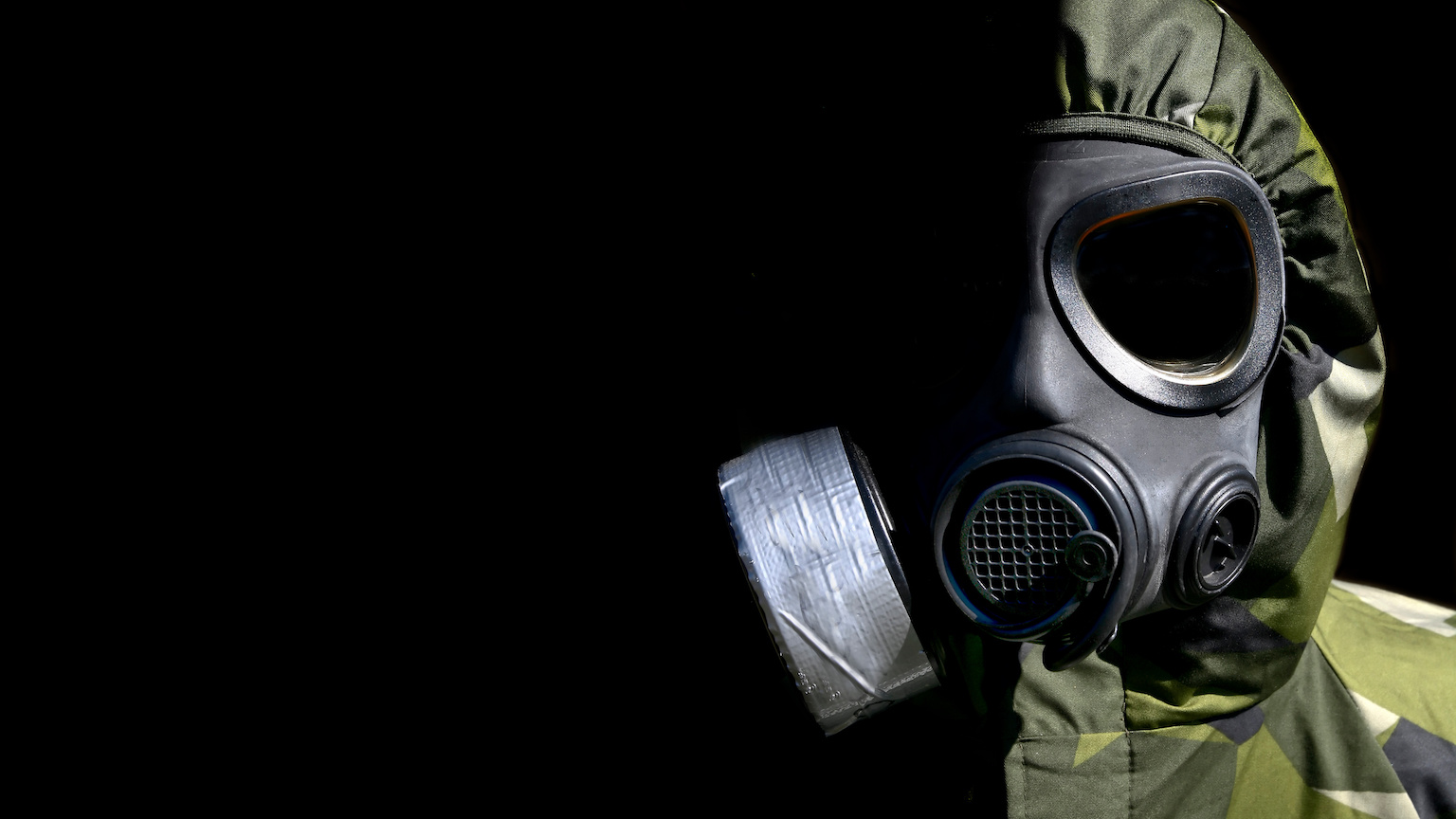Nanofabricators: a “Star Trek” vision of the future

- Nanofabricators, which can quickly manufacture just about anything molecule by molecule, are physically plausible.
- However, there are several major physical and chemical obstacles that need to be overcome in order for nanofabricators to become a reality.
- Though the hurdles are massive, the revolution it would produce for human civilization means nanofabrication is far too tantalizing to give up on.
The concept of the nanofabricator presents us a Star Trek version of the future. Need a meal? Push the button on the replicator. Need a wrench? Push the button on the replicator. There is no use for money when anything you want can be instantly manufactured on the spot.
Building wondrous new inventions atom-by-atom was first floated by Richard Feynman in his fantastic lecture, “Plenty of Room at the Bottom.” The idea gained traction in the 1980s and 1990s, spurred on by the popular and scientific work of K. Eric Drexler. In Drexler’s imagination, a foundry for molecules would suck in feeds of raw material and build up objects (like a 3D printer) rather than starting with large masses of material and carving them down to shape. This dream excited futurists and science fiction authors. It also inspired many researchers and students (including, at one time, yours truly) to pursue research in nanotechnology.
Nanofabricators are possible
As Feynman noted in his lecture, there is no physical law that forbids molecules and even atoms from being assembled in this way. Not only is it plausible, we are the living embodiment of nanofabrication. Cells possess the machinery necessary to use blueprints (DNA) to encode messages (RNA) that provide instructions to molecular foundries (ribosomes).And Nature is no longer the only nanofabricator.
Human ingenuity has created synthetic instruments to operate at this scale. We use microscopes with tiny scanning needle tips to view single atoms. A graduate student running such a microscope can position one atom, or a small molecule — though with some difficulty. We also implement complex chemical processes to synthesize large quantities of new chemicals, such as polymer plastics.
Yet, neither of these techniques are practical for nanofabrication. Our industrial production processes are very large and very crude in atomistic terms. The casting, molding, or machining of a small part is a rough treatment of a trillion trillion atoms (in which being within 100,000 atoms of a particular design parameter is a tight requirement).
Our student with the nano-manipulating microscope could mechanically assemble atoms with high precision, but it would take a time greater than the age of the Universe to build the head of a pin. Thus, building anything out of atoms with a giant machine is just too slow and too hard. What we need are tiny machines — lots (and lots) of them — to assemble substantial quantities of matter from microscopic building blocks.
The problem with nanofabricators
Drexler engaged in a famous debate with Nobel Prize-winning chemist Richard Smalley over the practical design of a nanofabricator. Smalley, himself a founder of and advocate for the field of nanotechnology, and an admirer of Drexler’s ideas, took issue with the application of an industrial engineering approach to the nanofabrication problem.
We generally synthesize molecules via chemistry and not mechanical manipulation. The smaller a molecule or particle is, the more surface area it presents, relative to its volume. Tiny particles become dominated by surface-based forces that cause them to act in ways that large particles don’t. Soccer balls don’t leap up from the ground and attach themselves to our legs mid-kick with such strength that we cannot rip them off again. Nanoparticles can.
Smalley specifically brought this up in the debate. He called it the sticky fingers problem. When you mechanically manipulate molecules and atoms, they tend to adhere to things. They cannot easily be moved without finding something to stick to, and they cannot easily be dislodged once they do. This applies not only to the apparatus, but to unwanted atoms that happen to be nearby as well.
For example, keeping a free oxygen (O) atom from immediately sticking to another O atom and forming O2 is extremely challenging. There is a reason our atmosphere is made of O2, CO2, and H2O, and our ground is made up of quartz (SiO2), alkali feldspar (minerals with O8 groups), Al2O3, and so many other oxidized compounds that 47% of the Earth’s crust mass is oxygen by weight. Manipulating an isolated O atom, or trying to assemble something in which you are trying to prevent oxygen from running it, would be very hard.
Smalley raised a second practical issue. A nanofabricator presumably needs tiny mechanical arms to do its assembly work. To effectively grasp an atom, the “hands” on these arms must be about the size of an atom, or a few atoms at most. To bring two atoms together, “fingers” holding each atom would be required. Ideally, the fingers would be smaller than the atom they grasp so as to move it with high fidelity. The trouble is that a finger cannot be smaller than an atom, and thus we begin to run out of the “room at the bottom.” Smalley called this the fat fingers problem.
Assembling molecules with the fat fingers can get even more tricky: the molecules cannot just be smashed together. To bond in the desired way, they must be placed, in certain orientations and under certain conditions, with great care. The chemistry concept is the molecule’s path along a parameterized reaction coordinate. Following the proper path likely requires more flawlessly operating tiny fingers.
A chemical solution?
Smalley, an experimental research chemist, then proposed that nanofabricators might instead work via chemistry, like the processes inside cells. This too suffers from substantial flaws, revealed by a deeper investigation of potential chemical approaches. The first approach is a nanofabricator operating with organic molecules contained in an aqueous (water-based) environment. It would manipulate not individual atoms but small catalytic molecules (enzymes) to spur on chemical reactions that assemble larger molecules out of smaller component molecules.
Even with the help of natural machinery like enzymes, selecting, arranging, and bonding molecules is still tricky work. More fundamentally, these processes are limited to certain types of molecules. Cells fabricate proteins and various forms of natural organic compounds, but they don’t construct metallic objects. They don’t construct semiconductors that we use for computation, nor do they construct many other high-tech materials. Perhaps the nano-future could be made of organic composites.
If we wish to use chemical methods without operating in water or building upon cellular processes, Smalley argued the effort will require development of “a vast area of chemistry that has eluded us for centuries.”
Drexler counters that nanofabricators will not work via chemistry but indeed will use mechanical synthesis. He repeatedly describes this effort as an engineering challenge. This reveals a philosophical distinction in the debate over nanofabricators. Drexler’s mentality is that of an engineer, believing that once a problem is known to be solvable, it is simply a matter of systematically applying known models until the solution is achieved. Smalley’s approach is that of a scientist, arguing that the problem cannot yet be tackled by engineering models because the underlying scientific details are not yet fully understood.
Practical nanofabrication
Scientific thinking coalesced around Smalley’s positions. This put a damper on the research push for nanofabricators. While the wider field of nanotechnology barrels on, it focuses on smaller goals. But, this hasn’t shaken the belief of some futurists in nanofabricators and the tiny nanobots (nano-sized robots) they would produce. Some predictions — like scads of nanobots swarming through our bloodstream zapping pathogens or rejuvenating our bodies to help us live forever or infiltrating our brains to make us ultra-smart — seem a little silly.
So far, the closest we have come to practical nanofabrication is the polymerase chain reaction (PCR), the crucial invention behind the proliferation of DNA sequencing, infectious disease testing, and criminal forensic investigation. Rather than creating synthetic machinery, we are repurposing cellular machinery to replicate DNA molecules. This “molecular photocopying” technique generates exponentially more DNA molecules from a few initial ones.
Hence, nanofabrication is certainly possible, though the hurdles are massive. But the revolution it would produce for human civilization means nanofabrication is far too tantalizing to give up on. The reward is worth the cost of patiently funding continued research.





